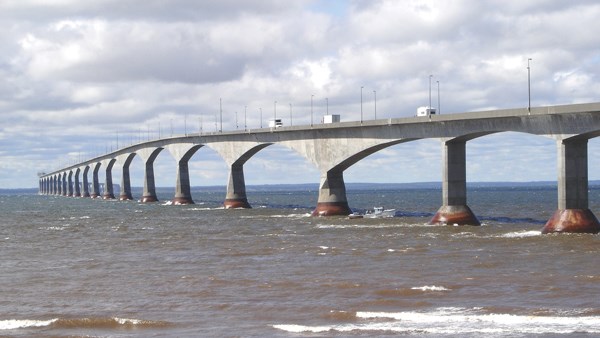On May 31, 1997, the Confederation Bridge linking mainland New Brunswick, and thereby the rest of Canada to Prince Edward Island opened for traffic.
At 12.9 kilometres long, spanning the Abegweit Passage of the Northumberland Strait, it is subject to tidal currents up to four knots and sea ice in the winter. This makes it one of the great engineering feats, not just in Canadian history, but in the world.
It is the world’s longest bridge over ice-covered water and symbolically named for confederation, which was largely hashed out at the Charlottetown Conference in 1864. Ironically, PEI would not join confederation until 1870.
In 1997, when the Confederation Bridge opened, the state of confederation was in flux. The country had just dodged a second referendum bullet just two years earlier in 1995 by the narrowest of margins 50.6 per cent to 49.4 per cent.
The failure of the Meech Lake Accord in 1987 and Charlottetown Accord in 1992 had led to a resurgence in Quebec Separatism and ultimately the . All of this turmoil had also spawned the Bloc Quebecois, federal separatist party that would dominate Quebec’s Parliamentary caucus from more than two decades from 1993 until 2015.
Meanwhile, western resentment was also on the rise. In 1993, the same year the Bloc Quebecois drained off Progressive Conservative seats in Quebec, the fledgling Reform Party took away all of the Conservative support in the west.
This week in 1997, as the Confederation Bridge was accepting its first travellers, a federal election campaign was on the verge of wrapping up. The Liberals still had a majority government. The Bloc under Gilles Duceppe (Lucien Bouchard stepped down as leader after the failed 1995 referendum) was the official Opposition with 54 seats. Preston Manning and the Reform Party were nipping at their heals with 52 seats.
In the Yorkton-Melville riding, Garry Breitkreuz, who was swept into the seat on the 1993 Reform tidal wave was seeking re-election against New Democrat Evan Carlson, Liberal Lloyd Sandercock and Progressive Conservative Ivan Daunt.
When the ballots were counted June 2, Breitkreuz had handily defeated them garnering as many votes as the other three combined.
Nationally, Jean Chrétien’s Liberals hung on, just barely, to a majority while Reform and the Bloc switched places with 60 and 44 seats respectively.
“Across the West [sic], voters turned to Reform as the answer to the charade of the Bloc Quebecois as the official Opposition,” the editorial in the June 4, 1997 edition of Yorkton This Week opined.
“Jean Charest and the Conservatives, despite a revival in the Maritimes and signs of life in Quebecand Ontario simply had too many coat-tails to do well in the West.
“In this province, the legacy of provincial Devine and federal Mulroney governments, were largely responsible for most federal PCs likely losing their deposits.”
Of course, at the time, Reform was as much a regional party as the Bloc was, something the editorial, reprinted from The Leader-Post recognized with some prescience.
“What is abundantly clear is Reform’s message of smaller government, lower taxes and a strong voice for English Canada was welcomed by voters west of the Red River,” it said.
“What remains to be seen is whether Reform can use this same message to fashion a breakthrough in Ontario and become a genuine national party.
“Without this breakthrough Reform will be doomed to extinction, just like its Social Credit predecessor.”
It would take almost another decade, three elections, two new leaders, two name changes and the cannibalization of the federal Progressive Conservatives, but the breakthrough did come in 2006 with Stephen Harper’s first minority government win.
Now, 20 years later to the week, with the election of Andrew Scheer to the leadership of the Conservative Party of Canada, Reform is still alive and well as a national political force and the confederation remains as polarized as ever, but still intact.



